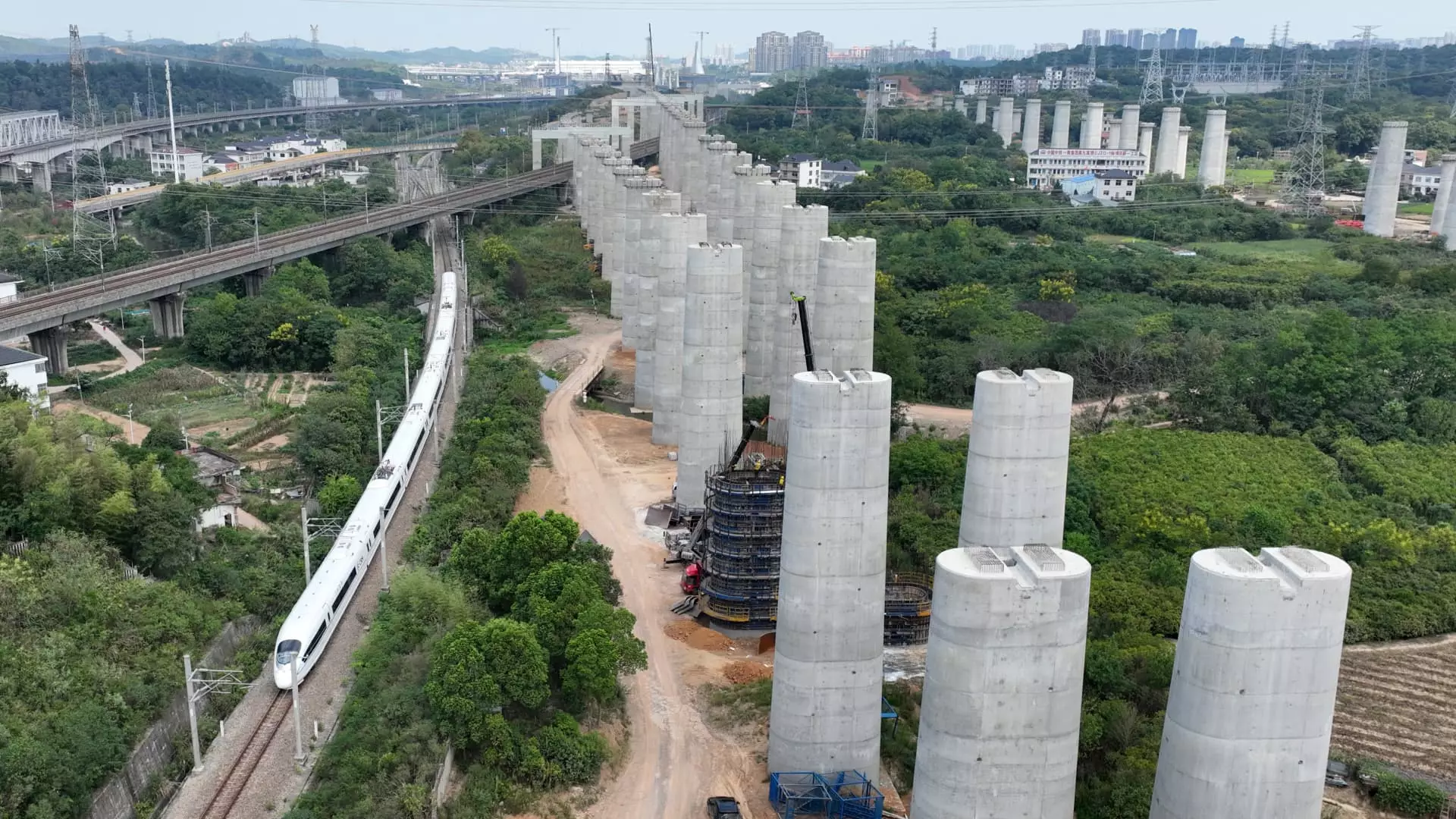The economic malaise currently afflicting China is deeply rooted in the turmoil within its real estate sector. For decades, real estate development served as a primary vehicle for wealth accumulation among Chinese households. However, the landscape began to shift dramatically in 2020 when the Chinese government implemented policies aimed at curbing the excessive reliance of property developers on debt. This decision was not merely a regulatory adjustment; it signaled a broader recognition of the vulnerabilities woven into the fabric of China’s growth model.
As the crackdown on debt took effect, property values started to decline, triggering a ripple effect that resonated throughout the economy. Developers have since curtailed their land acquisitions, leading to a significant downturn in local government revenues, especially at district and county levels. S&P Global Ratings has forecast that recovering the financial health of local governments could take three to five years, which raises red flags for the overall stability of the economic system.
The intertwining of local government finances with real estate highlights a systemic risk that goes beyond mere fiscal imbalance; it threatens the foundational stability of economic growth as local authorities grapple with declining revenue from taxes and land sales.
The intricate dynamics of China’s local governments are painted in shades of austerity and desperation. In an environment where operating revenues have already faced a cutback averaging 10% since 2018 due to tax and fee reductions, local authorities lack significant levers to stimulate growth or invest in recovery initiatives. The current attempts to replenish lost revenue are thus met with severe limitations, further exacerbated by the lingering impact of the COVID-19 pandemic on consumer spending.
As local governments increasingly resort to historical audits and tax recoveries for income that stretches back decades, businesses are left in a precarious position. Companies are facing demands to settle substantial amounts for unpaid taxes—often connected to operations that took place long ago, creating an atmosphere of uncertainty. Take, for example, NingBo BoHui Chemical Technology, which received a notification demanding repayment of 300 million yuan ($42.3 million) for consumption taxes from equipment produced only recently. This trend not only undermines fragile business confidence but also stymies the potential for hiring and investment.
Consumer sentiment is intrinsically linked to the economic vitality and stability of any nation. As the CKGSB Business Conditions Index hovers around the 50 mark—indicative of stagnation—consumers remain wary amid fears of potential economic instability. Retail sales have only seen modest upward movement, reflecting a broader trend of slow consumer recovery since the pandemic.
With local governments struggling to reconcile their financial health while also trying to stimulate consumer confidence, a vicious cycle begins to take shape. The pressure to reclaim tax revenues sentenced businesses to operate with a cloud of uncertainty, inhibiting wage growth and hiring. As businesses review their operations under the watchful eye of local authorities, the reluctance to invest becomes self-perpetuating, limiting prospects for economic expansion.
The intertwined nature of debt and local government financing structures compounds the urgency of China’s economic predicament. Recent analysis suggests that as government debt levels swell—projected to approach 312% of GDP by the year’s end—the impacts on economic stability will be profound. Historical parallels to past government-led deleveraging efforts from 2012 to 2016 indicate a consistently detrimental effect on GDP growth, which is projected to fall short of the government’s targeted growth figure of around 5% for this year.
In a system increasingly governed by a rigid, state-controlled apparatus, any pivot towards growth fueled by consumption appears daunting. The shadow of local government financing vehicles (LGFVs) looms large, as they often undertake liabilities far exceeding the revenue generated from public projects. Consequently, these entities represent an ever-present risk, aptly deemed a “grey rhino”—highly probable yet often overlooked due to the enormity of their implications.
Looking forward, China’s economic landscape remains precariously balanced. The calls for policy adjustments in light of the sustained economic strain are growing louder, especially as the government’s debt strategy comes under increased scrutiny. Notably, stakeholders are beginning to express concern that continued delays in correcting the structural imbalances may invite deeper systemic issues that could be more challenging to manage in the future.
The Chinese government’s ongoing struggle to mitigate the immediate liquidity challenges while upholding overall financial system stability will likely define its policy actions in the coming years. Without a coherent strategy to address both the immediate revenue crisis and the underlying debt dynamics, the cycle of stagnation could prolong, thus complicating any prospects for robust recovery.
The path forward requires innovative, strategic thinking aimed at revitalizing China’s economy. To navigate this challenging terrain, coordinated efforts to stabilize local government finances, stimulate consumer confidence, and yield substantial structural reforms will be essential. Lest these challenges remain unaddressed, China may find itself facing prolonged economic instability that stifles growth and innovation.

